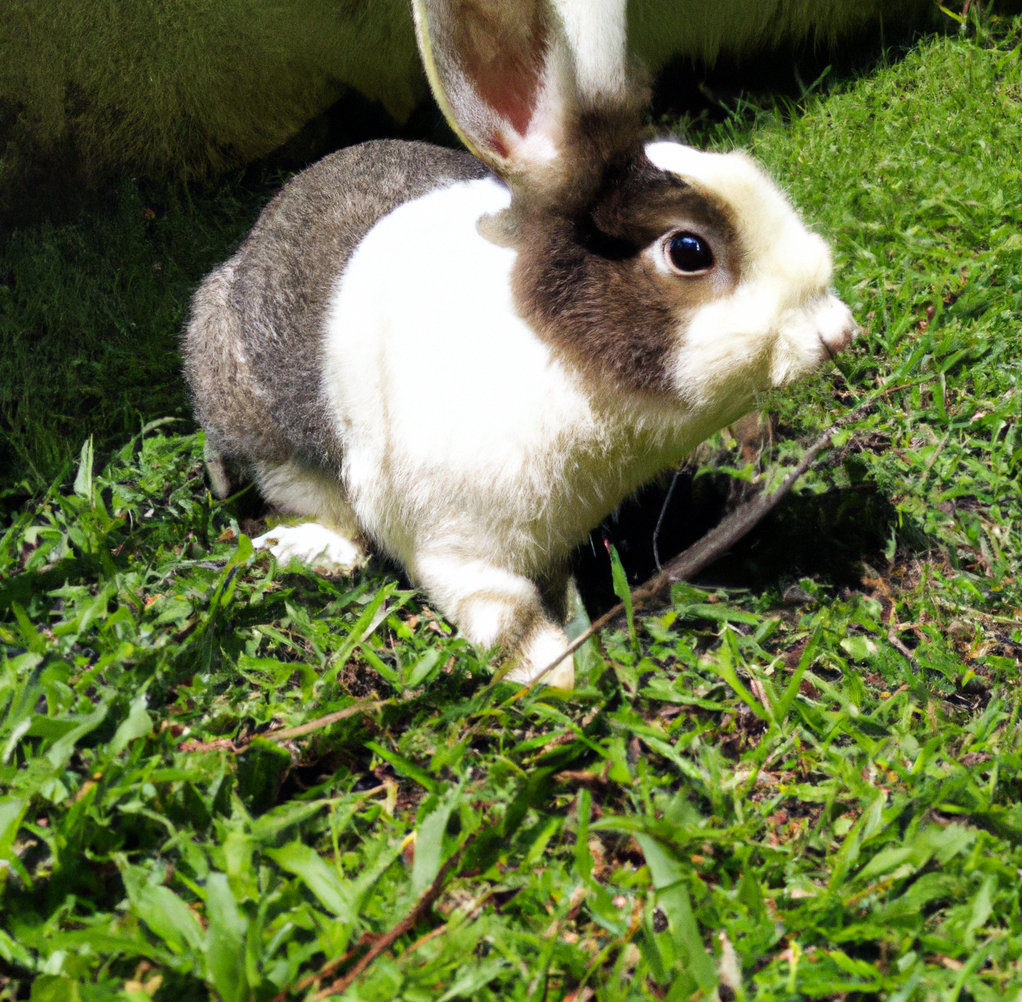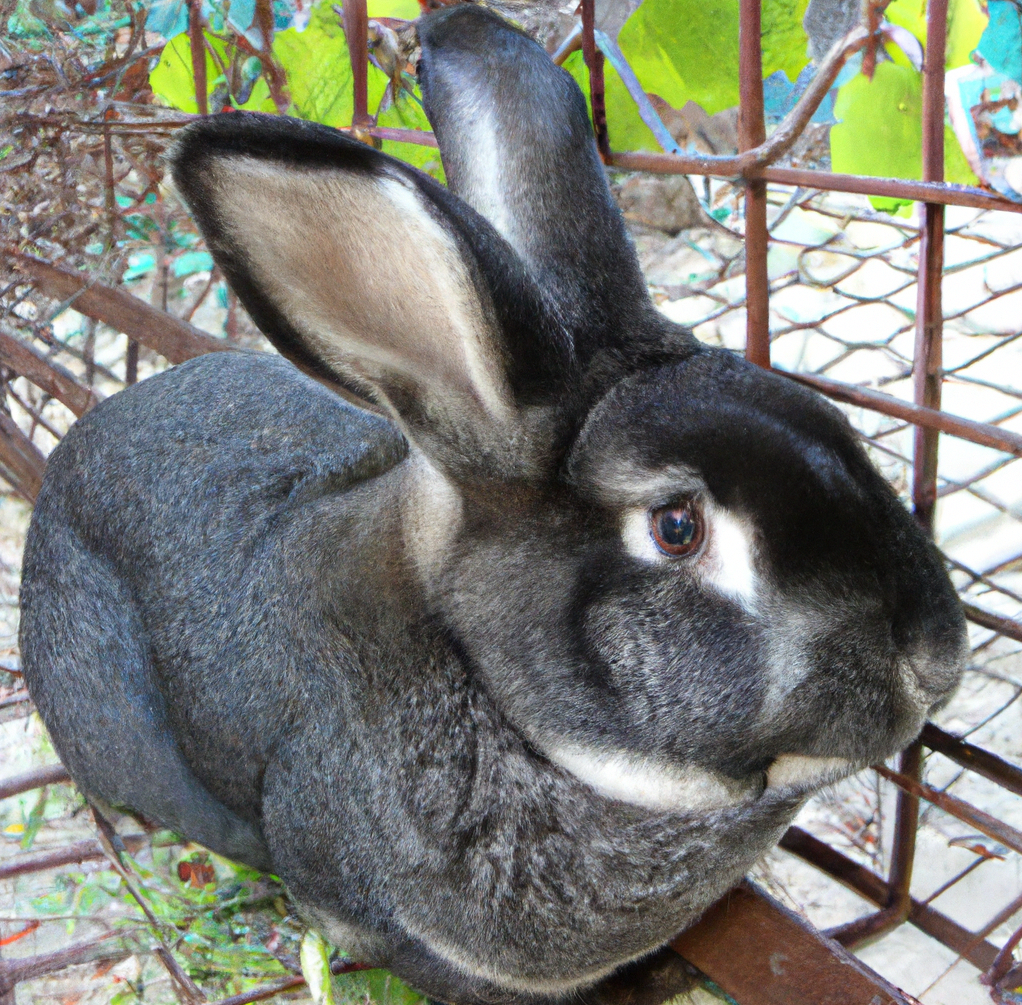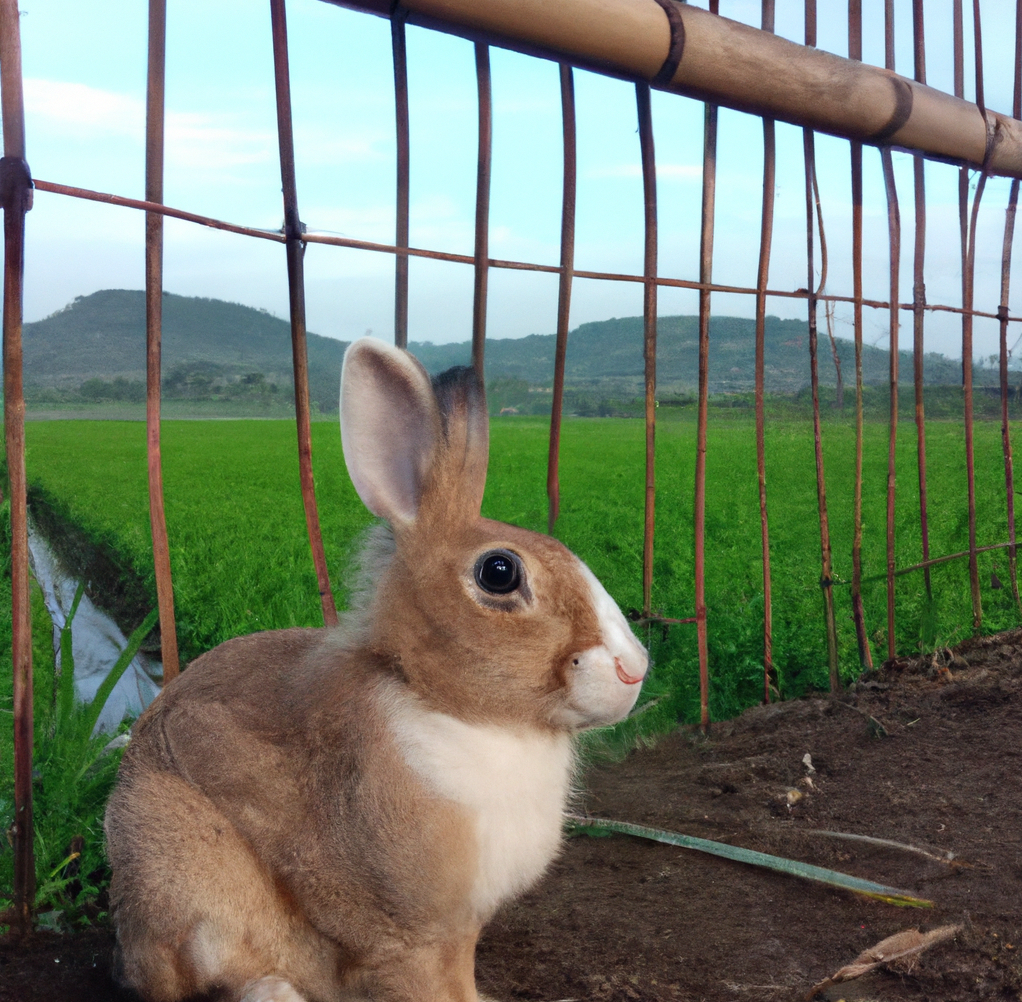Rabbits are mysterious creatures and often their behavior can be difficult to interpret. One common behavior that baffles many rabbit owners is the thumping of their feet. This behavior can be quite loud and confusing, so understanding why rabbits thump their feet can help us to better understand our furry friends. In this article, we’ll take a look at why rabbits thump their feet, what it means, and how to respond to it.
The Purpose of Thumping: Uncovering the Reasons Behind Why Rabbits Thump Their Feet
Thumping is one of the most recognizable behaviors of rabbits. It is an instinctive behavior that rabbits use to communicate with each other and with humans. Thumping is when a rabbit rapidly stamps, raises, and slams their hind feet on the ground in succession, often accompanied by a loud thumping sound. While the behavior has long been observed, the reasons behind why rabbits thump their feet have often remained a mystery. This article will explore the different theories behind why rabbits thump their feet, as well as their effectiveness.
One of the most commonly accepted theories behind why rabbits thump their feet is to alert other rabbits of potential danger. This theory suggests that rabbits thump their feet to warn other rabbits of approaching predators or other threats. This theory is supported by the fact that rabbits are more likely to thump their feet when they perceive a potential threat in their environment. They also tend to thump their feet in a specific pattern, which may indicate that the rabbits are sending a specific message to other rabbits.
Another theory suggests that rabbits thump their feet to express excitement and happiness. This theory suggests that rabbits thump their feet when they are feeling particularly happy or excited about something. This theory is supported by the fact that rabbits often thump their feet when they are being given treats or interacting with people.
Finally, another theory suggests that rabbits thump their feet to ward off predators or other threats. This theory suggests that rabbits thump their feet as a warning to potentially dangerous animals or people. This theory is supported by the fact that rabbits will often thump their feet more frequently when they sense a potential danger.
Overall, there are a number of theories behind why rabbits thump their feet. While the exact reasons behind this behavior may remain a mystery, it is clear that thumping serves a purpose in the life of a rabbit. Whether it is used to communicate with other rabbits, express excitement, or ward off potential predators, thumping is a behavior that is essential to the well-being of rabbits.
The Anatomy of a Thump: Exploring the Physiological Mechanics Behind Rabbit Thumping
Rabbit thumping is a fascinating behavior that can often be seen in wild rabbits. It is a complex phenomenon that has intrigued scientists and animal behaviorists for decades. In this paper, we will explore the physiological mechanics behind rabbit thumping, as well as its potential purpose and meanings.
Rabbit thumping is characterized by the animal forcefully thumping its hind feet on the ground. Rabbits may thump in response to stimuli such as predators, loud noises, or changes in their environment. This behavior is thought to serve as an alert system, warning other rabbits of potential danger.
The physiological mechanics of rabbit thumping involve a combination of muscular and neurological processes. When a rabbit thumps its hind feet, the flexor muscles in its legs are activated. This causes the rabbit’s hind feet to lift off the ground, and the rabbit’s body weight is transferred to its forelimb muscles. As the rabbit’s body weight is shifted, its muscles begin to contract. This contraction causes a vibration in the hind legs that is then transmitted through the body and into the ground.
The thumping sound is produced by the vibrations of the rabbit’s body weight being transferred to the ground. The sound can travel up to one kilometer through the air, or up to two kilometers through the ground. This allows other rabbits to be alerted of potential danger from a distance.
In addition to the potential warning function of rabbit thumping, some researchers believe this behavior may also be used as a form of communication between rabbits. It is thought that rabbits may thump to indicate their location, dominance, or even to express distress.
Rabbit thumping is a complex behavior that has many potential meanings and uses. Through further scientific research, we can gain a better understanding of this behavior and its implications for our understanding of animal communication and behavior.
Thumping and Communication: How Rabbits Use Thumping to Communicate With Each Other

Rabbits are social animals that use thumping to communicate with each other. Thumping is a vocalization that rabbits use to alert other rabbits to potential danger or to show excitement. It is an instinctive behavior that can be seen in both wild and domestic rabbits.
Thumping is usually done with the hind legs and is a powerful and loud vocalization. When a rabbit thumps, they can be heard up to a mile away. The thumping sound is a warning and is used to alert other rabbits of potential danger. It is thought that thumping is a way for rabbits to stay safe in their environment.
In addition to thumping as a warning, rabbits also use thumping to communicate with each other. When a rabbit is excited about something, they may thump to show that they are happy. They may also thump when they are curious or want attention from their fellow rabbits.
Rabbits also communicate with each other through body language. They may stand up tall and wave their ears around, indicating that they are alert and aware of their surroundings. They may also move their head from side to side, indicating that they are curious about something.
Thumping is just one of many ways that rabbits communicate with each other. It is an instinctive behavior that can be seen in both wild and domestic rabbits. Thumping is a warning that alerts other rabbits to potential danger, as well as a way to show excitement and gain the attention of other rabbits. By understanding how rabbits communicate with each other, you can have a better understanding of their behavior and better care for them.
Thumping and Behavior: Investigating the Role of Thumping in Rabbit Social Dynamics
Thumping is a behavior commonly observed in rabbits and is thought to be a form of communication used by rabbits to communicate with each other. It is a behavior that has been observed in both wild and domestic rabbits and is believed to be an important part of social dynamics within a rabbit group. In this article, we will investigate the role of thumping in rabbit social dynamics, examining how this behavior is used, what it communicates, and how it impacts the dynamics of the group.
Thumping is a behavior in which a rabbit stands up on its hind legs and stamps its hind feet on the ground. This behavior is thought to be a form of communication used by rabbits to convey messages to other rabbits in the group. Rabbits may thump to indicate alarm, to signal that they are ready to fight, or to mark their territory. It is also possible that, in some cases, thumping is used as a form of dominance display.
Studies have shown that rabbits are more likely to thump when they are in the presence of unfamiliar rabbits or animals. This suggests that thumping may be used to establish dominance in a group, to alert other rabbits of an approaching danger, or to mark territory.
In addition to being a form of communication, thumping may also have a role in social dynamics within a group of rabbits. Research has shown that thumping can have an impact on the behavior of other rabbits within the group. For example, rabbits that are thumped are more likely to retreat or be submissive. This suggests that thumping may be used to establish dominance or assert a rabbit’s place within the group.
Overall, thumping is an important behavior observed in rabbits, and plays a significant role in their social dynamics. It is a form of communication used by rabbits to convey messages to other rabbits in the group, and can influence the behavior of other rabbits within the group. As such, it is an important behavior to be aware of when observing rabbits and understanding how they interact with each other.
Thumping in the Wild: Examining the Role of Thumping in Rabbit Habitats and Ecological Interactions
Thumping is a behavior that can be observed in some species of rabbits, particularly in their wild habitats. This behavior is a form of communication that rabbits use to communicate with other members of their species, as well as to alert predators of their presence. Thumping can also be used to indicate territorial boundaries, as well as to warn of potential danger. In this paper, we will explore the role of thumping in rabbit habitats, its ecological implications, and its importance to the species.
Thumping is used for several purposes. It is a way for rabbits to make themselves known to other rabbits, either as a warning or to establish territory. Thumping is also used to scare away predators, as it can make an intimidating sound that is loud enough to be heard from a far distance. Additionally, thumping can be used to indicate distress, as a rabbit that is injured or cornered may thump with its hind legs to alert other rabbits of its condition.
Thumping is an important behavior in the environment, as it helps to maintain the health of the species. Thumping can be used to keep rabbits safe from predators and can also be used to indicate the presence of food sources or areas of safety. This behavior helps to ensure that rabbits are able to survive and reproduce, as it allows them to find and protect resources. Additionally, thumping helps to create social structures among rabbit colonies, as it allows them to recognize one another and form groups for protection.
Thumping is also important for the health of the environment. By providing an indicator of the presence of rabbits, thumping can help to prevent overgrazing of vegetation, as well as the spread of disease. Additionally, thumping can help to maintain the balance of species interactions, as it can be used to indicate the presence of predators and other animals.
In conclusion, thumping is an important behavior in rabbit habitats, as it allows rabbits to communicate with one another and protect themselves from predators. Thumping is also important for the health of the environment, as it helps to maintain the balance of species interactions and can be used to prevent overgrazing of vegetation. Therefore, it is clear that thumping plays a vital role in rabbit habitats and ecological interactions.
Thumping and Human Interaction: Investigating How Thumping Plays a Role in Rabbit-Human Interactions

Rabbits are a popular pet for many people and can be a source of joy and companionship. They can also be quite interactive and can develop a strong bond with their owners. One form of communication between rabbits and humans is thumping, a behavior where the rabbit thumps its hind legs and body on the ground. While thumping is often associated with aggression, research suggests that this behavior is more complex and can be used to communicate in a variety of situations. This article will explore how thumping plays a role in rabbit-human interactions, including the different motivations and contexts in which it occurs.
Thumping is often used to express a rabbit’s emotional state. When a rabbit is scared or startled, it may thump its hind legs and body on the ground in an effort to warn others or make itself appear larger. This is a natural defense mechanism that allows the rabbit to protect itself in unfamiliar or threatening situations. Rabbits may also thump when they are excited or happy, as a way of expressing joy or anticipation. This type of thumping is often accompanied by other behavior, such as jumping and running around.
Rabbits may also thump to communicate with humans. When a rabbit is comfortable, it may thump its hind legs as a way of getting attention from its owner. This type of thumping is usually accompanied by other forms of interaction, such as hopping up to the owner or nudging them with its nose. It may also be used to indicate that the rabbit is ready for a game or a treat. In some cases, a rabbit may thump in response to something its owner has said or done. This can be a sign of recognition or understanding, and can be a way for the rabbit to show its affection for its owner.
Thumping can also be a way for rabbits to communicate their displeasure. If a rabbit is feeling threatened, it may thump its hind legs as a warning sign. This type of thumping is often accompanied by other aggressive behavior, such as growling and lunging. In these cases, it is important for owners to be aware of the rabbit’s feelings and to provide a safe and comfortable environment.
In conclusion, thumping is an important form of communication for rabbits and can play an important role in rabbit-human interactions. It can be used to express a variety of emotions and intentions, from fear and excitement to joy and recognition. It is important for owners to be aware of the motivations behind their rabbit’s thumping behavior and to provide a safe and comfortable environment in order to encourage positive interaction between the rabbit and its owner.
Conclusion
In conclusion, rabbits thump their feet to communicate with other rabbits and humans. Thumping is a way of telling other rabbits that they are safe and that they should stay away. It can also be a sign of distress or a warning to predators. Humans can learn to recognize when their rabbits are thumping to better understand their behavior and needs.

